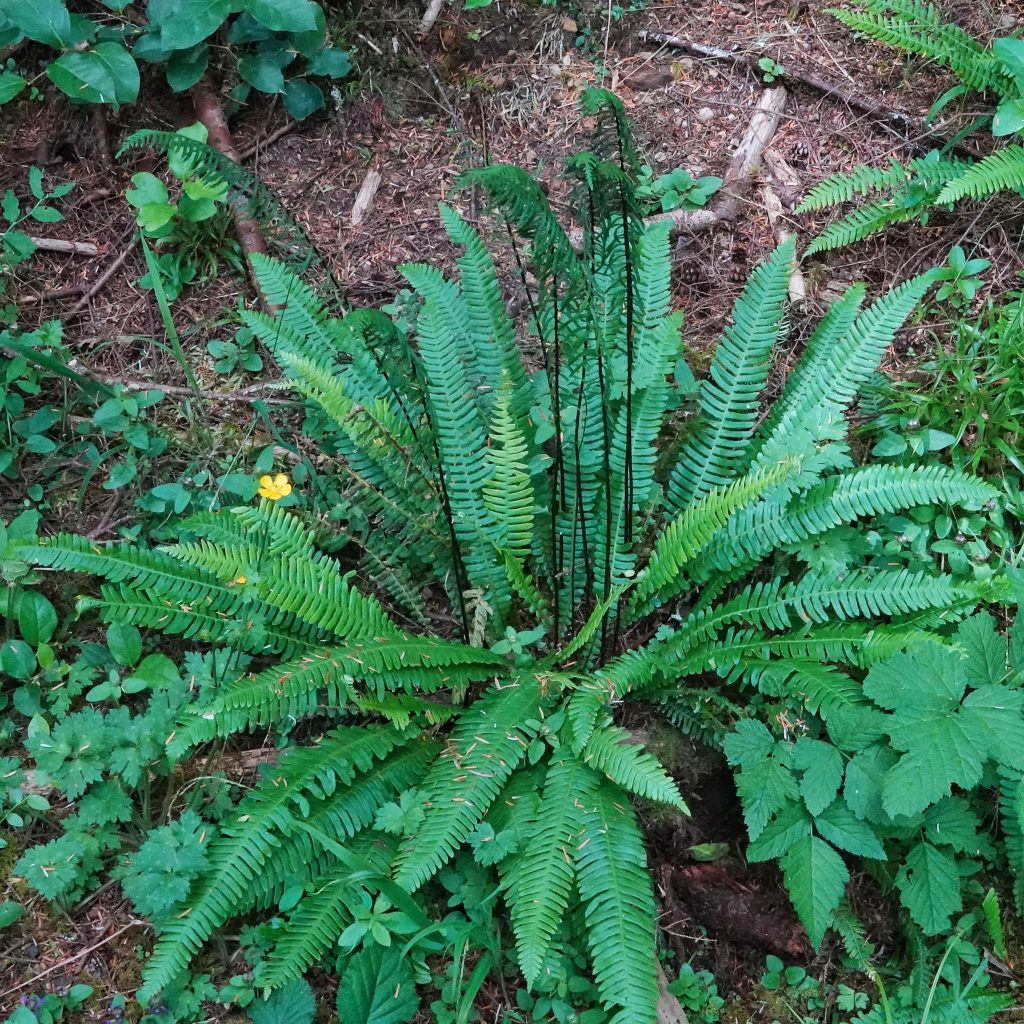
I recently spent a day around Warrenton, Oregon, helping my nbo Morgan’s partner Juniper move their stuff. After the heavy lifting was over Jun took us to their favorite spot in the area, a beautiful set of trails in Lewis and Clark National Historical Park. Besides the fact that in the cooler, moister conditions near the coast the blooming season was about a month behind what I’d been seeing around Vancouver, Washington, the most interesting thing to me was the abundance of deer ferns. Not that they are rare by any means, or that their proliferation was unusual for a coastal forest. It’s just that in my inland travels I seldom see them in close proximity to each other, and it was a joy to find so many of them.
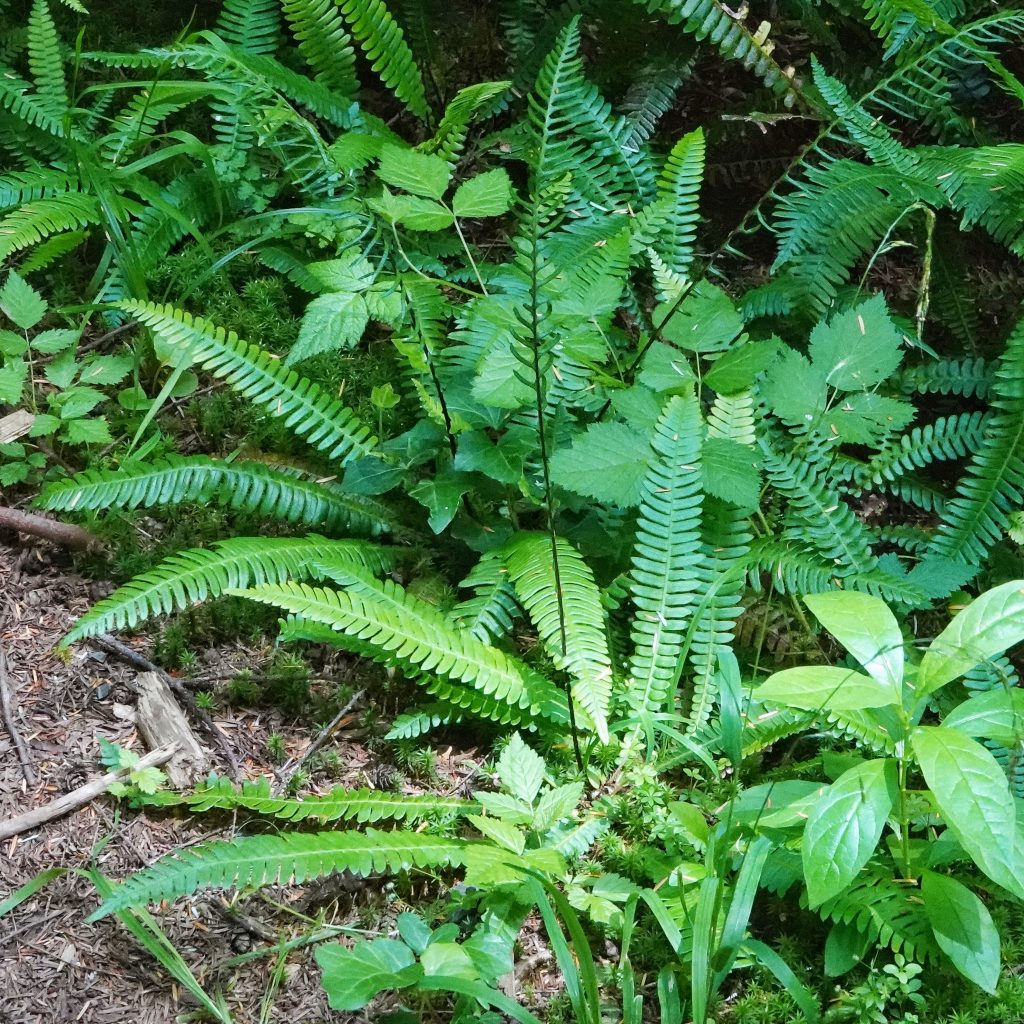
Besides the fact that they are beautiful, and as far as I know are the only ferns in our region with dimorphic fertile and sterile fronds (ETA-I should have said superficially similar ferns, because, as Lynn Graf pointed out, other ferns, notably those in the genera Cryptogramma, Botrychium, and Ophioglossum, also have dimorphic sterile and fertile fronds. I clearly failed to do adequate research here), deer ferns have also proven useful to cultures living close to the land, although their food uses were limited to chewing the leaves whilst traveling to reduce thirst and hunger, and the roots and young, peeled shoots could be eaten as emergency rations during famine, or when separated from the tribe. But the fronds were often used in baking to both separate layers and to impart flavor. They also found usage as bedding material. Medicinal uses of this plant include making poultices for skin sores, chewing the leaves for stomach and lung problems, and taking a decoction of the root for diarrhea. And they are so aesthetically pleasing that the Haisla and Hanaksiala tribes potted them for houseplants!
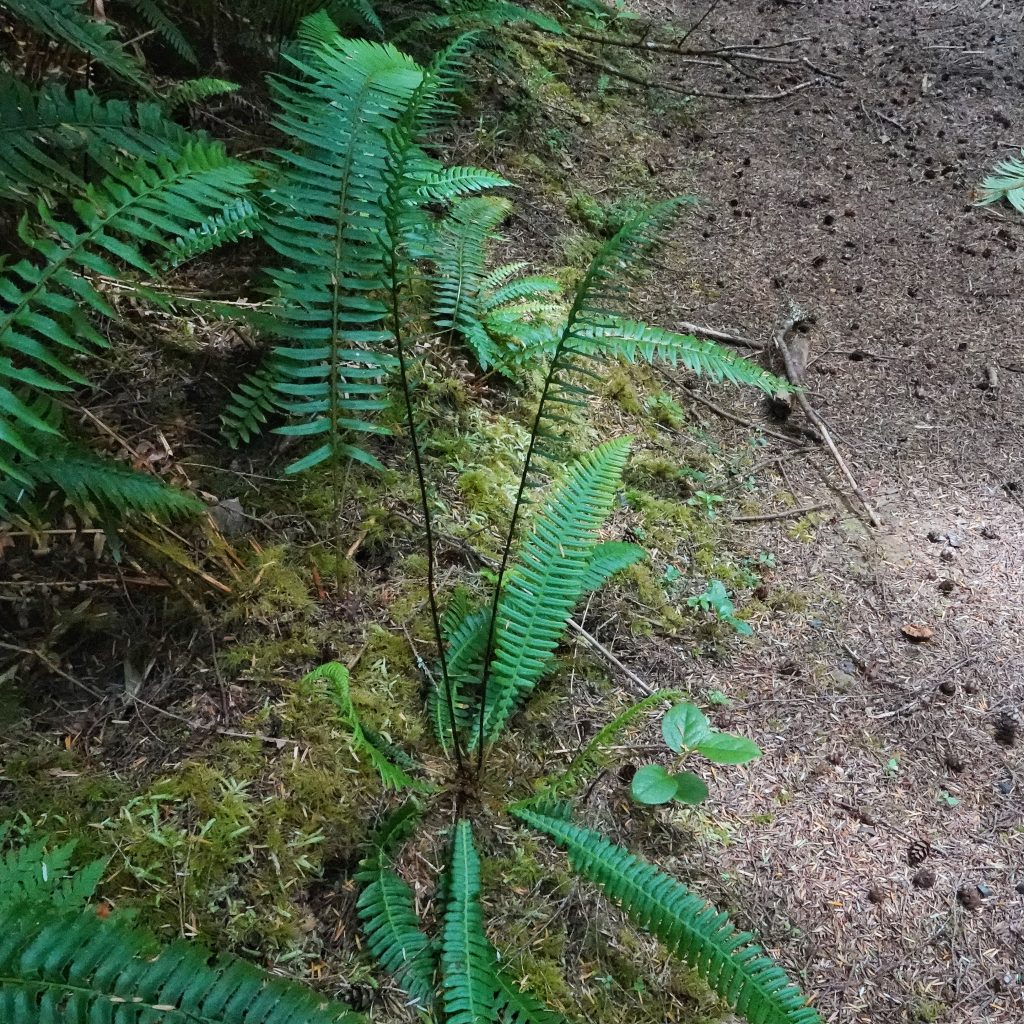
Though some of my oldest texts list this member of the family Blechnaceae as Struthiopteris spicant , almost all of the newer ones call it Blechnum spicant. However, in 2016 a paper was published reorganizing the taxonomy and nomenclature of all of the ferns and their allies. This was a group effort by 68 experts in the field, and was met with almost universal acceptance. Based on this deer ferns were moved back into the genus Struthiopteris, and ‘Flora of the Pacific Northwest’ (2018) followed their lead (as did ‘Flora of Oregon’ [Vol. 1; 2015] in the updated nomenclature on their website). Deer ferns are the only Struthiopteris sp. in our region, and are in fact the only other members of the genus in the US or Canada that are not confined to areas around the Gulf of Mexico. The only other member of the family Blechnacea in our region is the chain fern (Woodwardia fimbriata), and they look nothing like deer ferns.
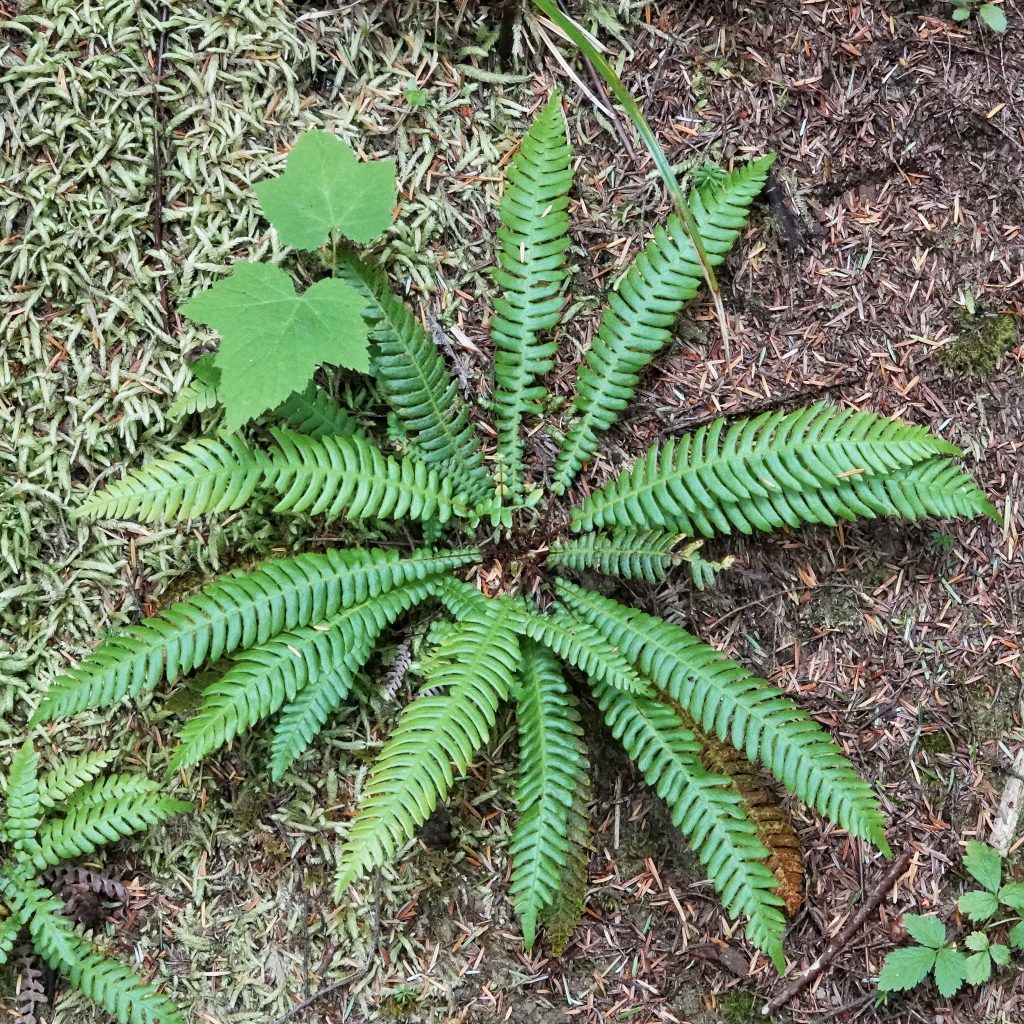
Description-Evergreen perennial fern with sterile fronds spreading to flat on the earth, usually in a rosette, and dimorphic fertile fronds up to 2’ tall; sterile fronds are medium green, once pinnate, have sessile pinnae that are long and narrow and slightly rounded at the tip; fertile fronds dark green, arising vertically from the center of the rosette, with dark brown stipe, and deciduous pinnae; pinnae are long, narrow, slightly rounded, with continuous sori parallel to the midvein.
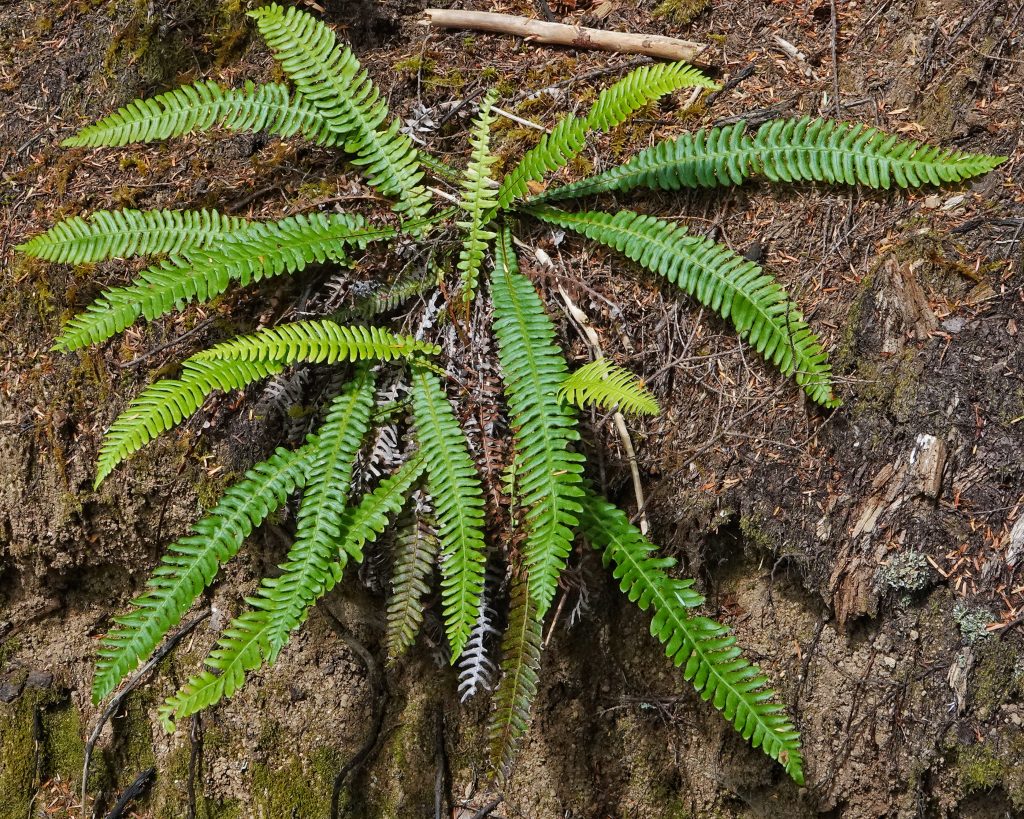
Similar species–Sword Fern (Polystichum munitum) and Polystichum imbricans have their pinnae on short petioles, as do other once pinnate Polystichum; Licorice Fern (Polypodium glycyrrhiza) does not have dimorphic fertile and sterile fronds, grows as individual fronds rather than with a basal rosette, and usually grows on rocks, trees, and logs; Polypdium amorphum and P. hesperium have short, wide, blunt pinnae, do not form rosettes, usually grow on rocks or very rocky soil, and do not have dimorphic sterile and fertile fronds; other superficially similar ferns in our region have at least twice pinnate pinnae, and do not have dimorphic sterile and fertile fronds.
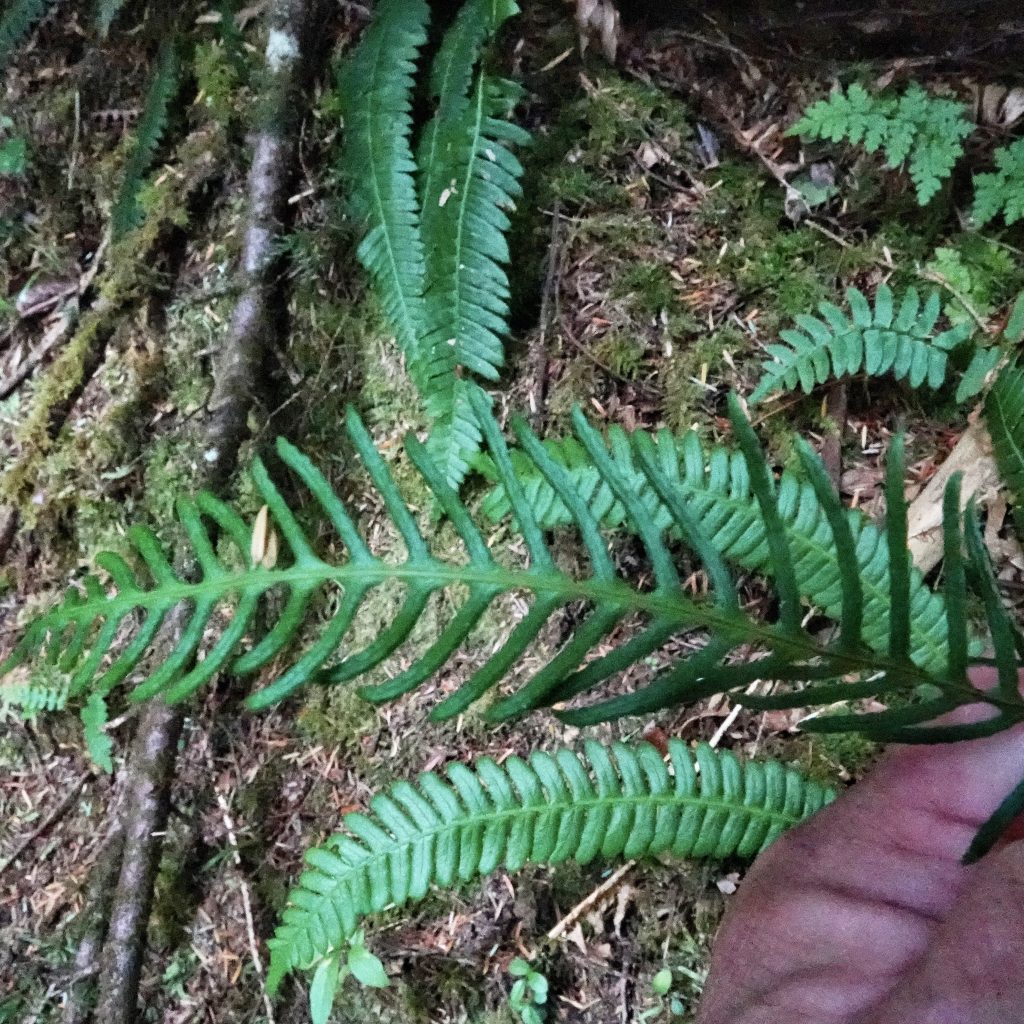
Habitat– Moist to mesic, shaded areas in forests, woodlands, edges of wetlands, and along streams, up to 6,000’; usually grows on good, deep, soil.
Range-Native to Eurasia, North Africa, and western North America; in our region it is found primarily west of the Cascades and in sw Oregon/nw California, with disjunct populations in montane areas east of the Cascades.
Reproductive timing-Spores from April to September
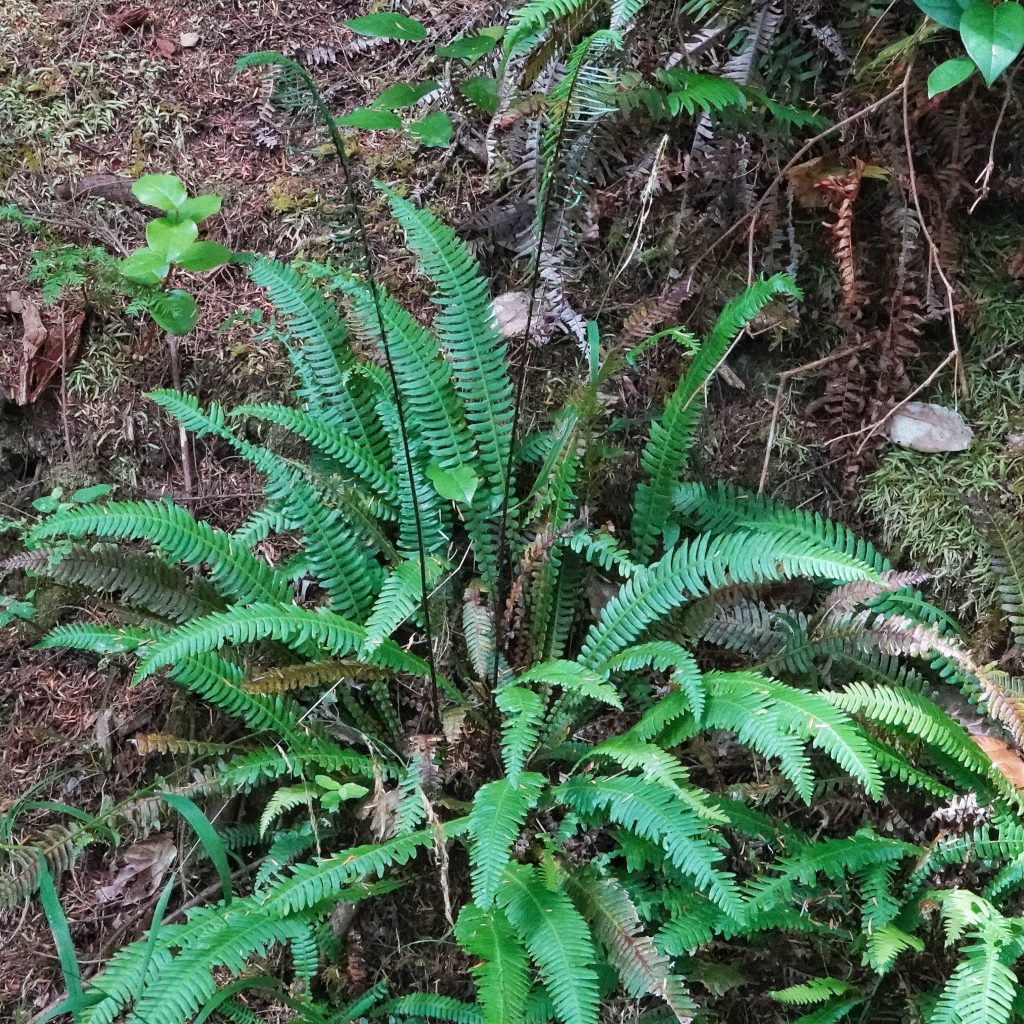
Eaten by-Deer, mountain goats, and elk use this as winter forage, but other than that I can find nothing that eats it.
Etymology of names–Struthiopteris is from the Greek words for ‘ostrich fern’, which I would guess refers to the similarity in appearance of the fertile frond to an ostrich plume, but I can find nothing to corroborate that. The specific epithet spicant probably is from the Latin word for spike, and seems to also reference the fertile fronds, although in this case noting it is spike-like.
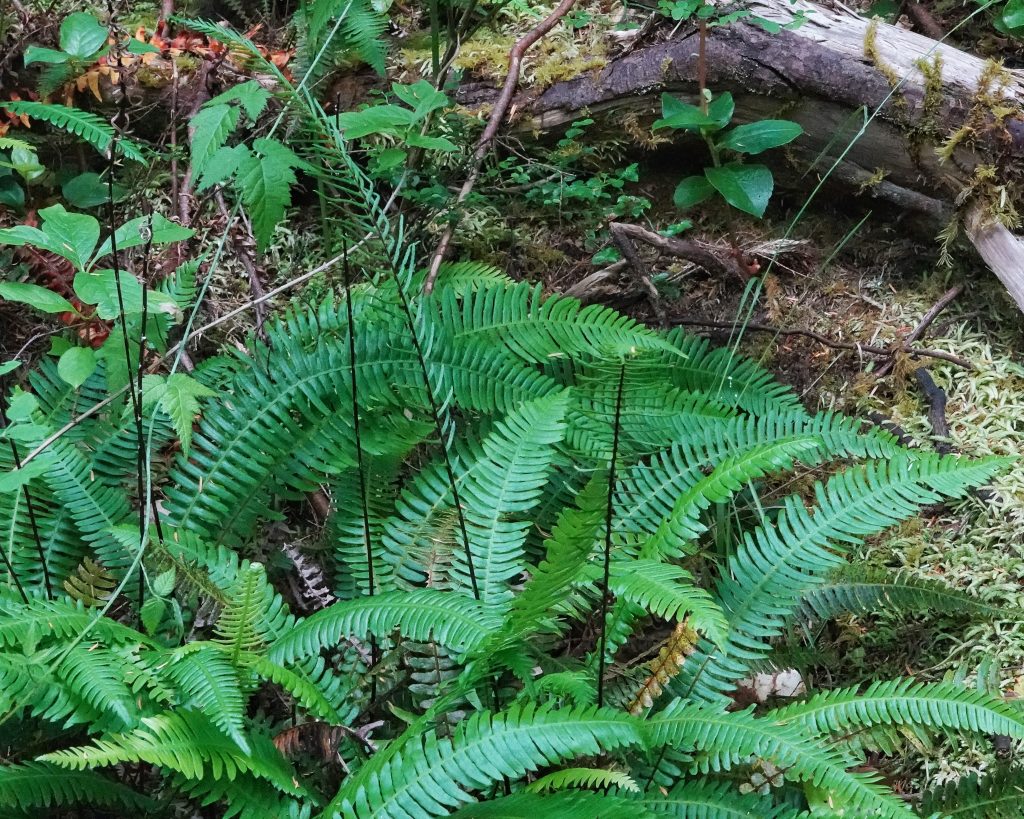
OregonFlora Struthiopteris spicant
https://pfaf.org/user/plant.aspx?latinname=Blechnum+spicant
BRIT – Native American Ethnobotany Database
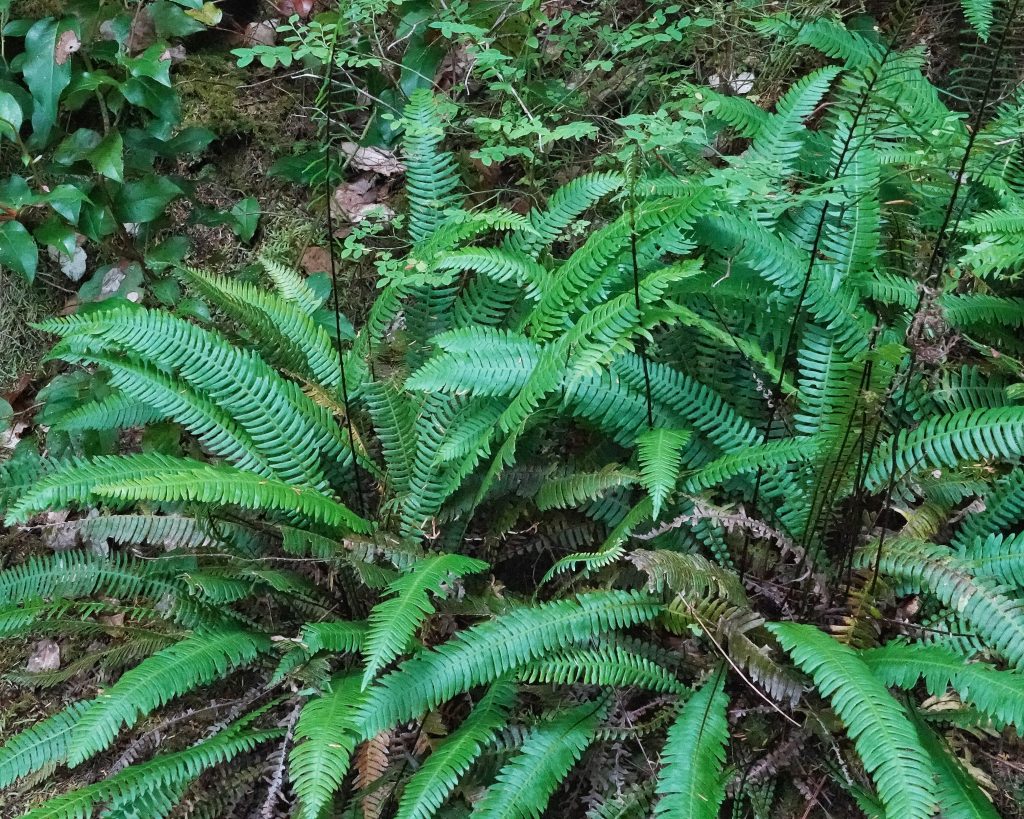
Thank you so much! One of my favorites.
Thank you for your appreciation, Anne!
Two comments: An unusual location for deer fern in Washington is on the trail to Frozen Lake at Sunrise, Mount Rainier National Park, at about 6000 ft (as I discovered to my great surprise last week). It took a while and the Burke Herbarium to believe it. It was growing from a crevice in a rock wall beside the trail, looking quite healthy but with no fertile fronds obvious.
Second, actually a question: How are you defining “our region”? Does it include montane areas or those east of the Cascade crest? Certainly both of those have dimorphic ferns, such as Cryptogramma cascadensis
I define the region as more or less being from the Pacific to the Rockies, and from the Fraser River to the south slope of the Siskiyous, and I was clearly incorrect in my statement. I knew I needed to check out dissimilar ferns, but failed to do so. Thank you for correcting me! I changed the profile to reflect this.
That is an interesting place to find deer ferns!